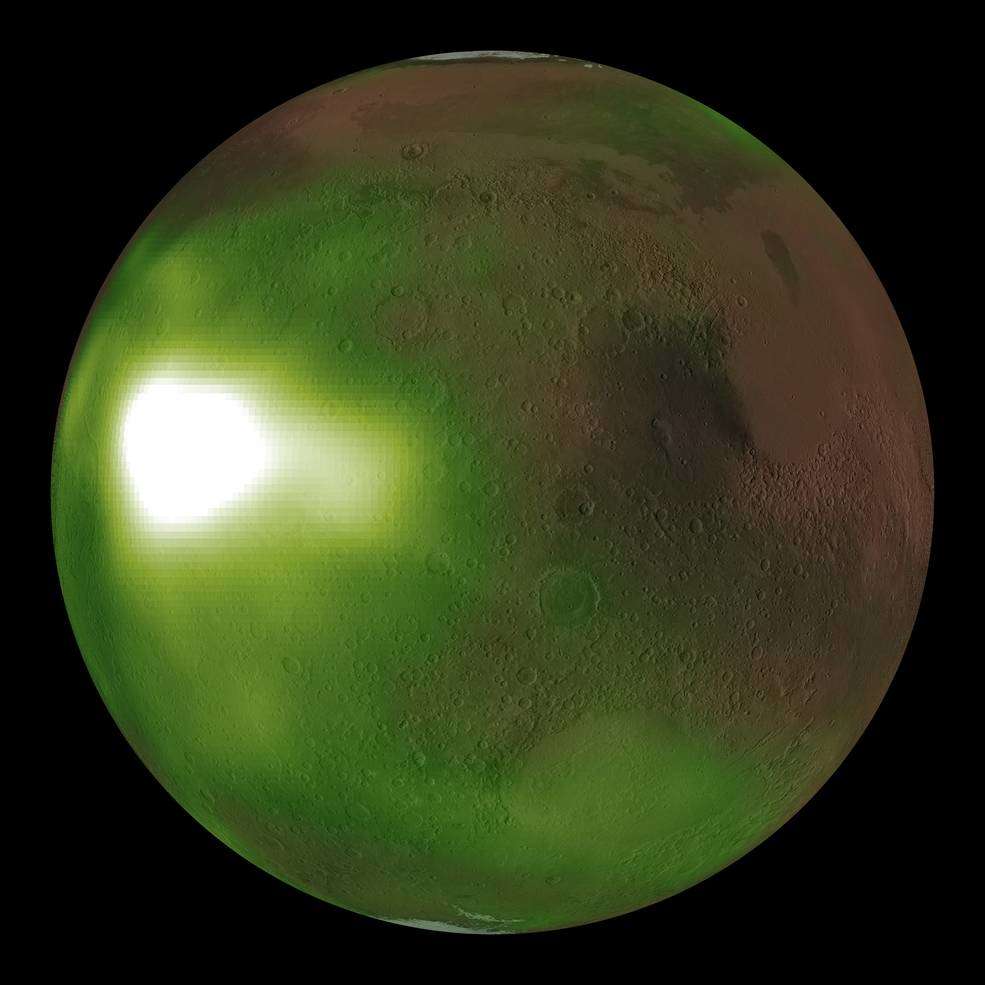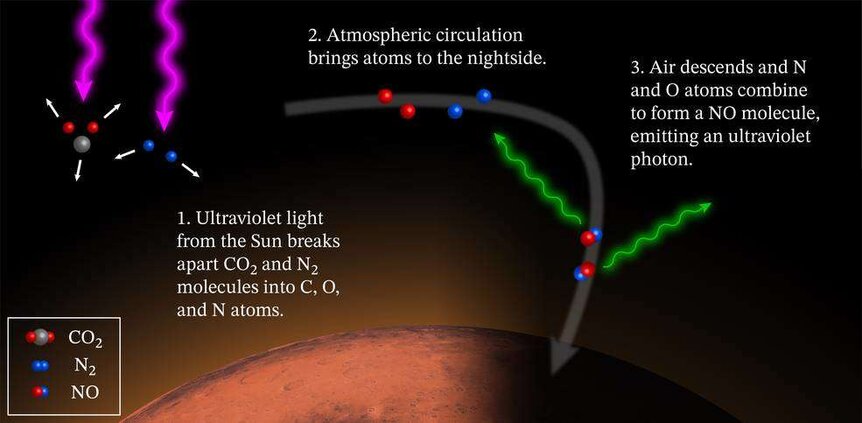Create a free profile to get unlimited access to exclusive videos, sweepstakes, and more!
Mars becomes Planet Hulk in eerie nightglow animation of UV-emitting atmospheric phenomenon

If ever there might be a suitable world that Marvel's Jade Giant might want to settle down on, it's this spooky, green-tinted rendering of Mars' nightside atmosphere delivered by the enterprising folks at NASA.
This new animation model depicts the Red Planet sporting an eye-catching emerald glow pulsing out UV flashes precisely three times per night during the spring and fall. NASA's evocative new video comes via the Imaging Ultraviolet Spectrograph on board the MAVEN (Mars Atmosphere and Volatile Evolution) spacecraft, which blasted off from Earth in 2013.
Scientists shared their observations in a research paper published earlier this month in the online journal Space Physics. The report carries conclusions drawn from a MAVEN study capturing two consecutive Martian years of imaging observations recording the known effects of nitric oxide ultraviolet nightglow.
"The ultraviolet glow comes mostly from an altitude of about 70 kilometers (approximately 40 miles), with the brightest spot about a thousand kilometers (approximately 600 miles) across, and is as bright in the ultraviolet as Earth’s northern lights,” explains co-author Zac Milby, researcher at the University of Colorado’s Laboratory for Atmospheric and Space Physics (LASP). “Unfortunately, the composition of Mars’ atmosphere means that these bright spots emit no light at visible wavelengths that would allow them to be seen by future Mars astronauts.”
On the day side of Mars, UV light courtesy of the Sun breaks down carbon dioxide and nitrogen molecules. These particles are distributed by high-altitude winds from the day side to the night side, where they drop down into lower altitudes. CO2 and nitrogen particles then reunite, creating energy seen in the form of UV light.
Ultraviolet emissions confirm the natural changes in wind patterns with the seasons and expose an especially bright spot on Mars' night side.
The simulation includes a digitally-added Mars globe to provide context, with ice caps seen marking the poles. Nightglow brightenings take place right after sunset, appearing on the left-hand region of this view of the planet's night side. These pulsations denote the importance of planet-encircling waves in the Red Planet's atmosphere.
“MAVEN’s main discoveries of atmosphere loss and climate change show the importance of these vast circulation patterns that transport atmospheric gases around the globe and from the surface to the edge of space,” notes Sonal Jain, a fellow researcher at LASP.




























